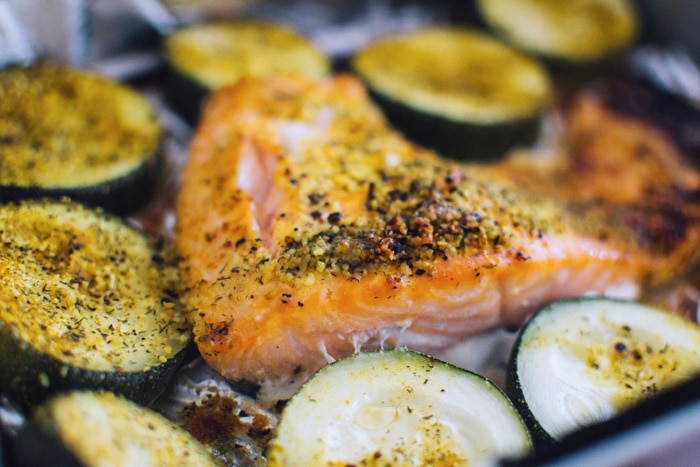
Written By: Gloria Tsang, RD
Title: Founding Registered Dietitian
Alumni: University of British Columbia
Last Updated on:

We’ve had a lot of questions lately regarding the safety of farmed salmon and PCBs. On one hand, the American Heart Association recommends eating fish and fish products to prevent heart disease. On the other hand, recent media reports claim that some fish and farmed salmon contain toxic substances. We will discuss a few major reports and some background information about farmed salmon and PCBs so that you can make a sound decision.
Table of Contents
Polychlorinated biphenyls (PCBs) are mixtures of up to 209 individual chlorinated compounds (known as congeners). There are no known natural sources of PCBs. PCBs are either oily liquids or solids that are colorless to light yellow. PCBs have been used as coolants and lubricants in transformers, capacitors, and other electrical equipment because they don’t burn easily and are good insulators. The manufacture of PCBs was banned in the U.S. in 1979 because of evidence they build up in the environment and can cause harmful health effects. However, PCBs persist in the environment. Fish absorb PCBs from contaminated sediments and from their food.

The average level of PCBs in salmon is 0.027 ppm (parts per million)
What does this means? There is an obvious discrepancy in the limits set by various health agencies. Dr Mark Woodin of Tufts University noted that the strict EPA guidelines are based on the amount of PCBs that are thought to be capable of causing one additional cancer case in 100,000 people over a 70-year lifetime.
Don’t give up fish and salmon completely. It is a known fact that fish and salmon offer benefits in heart health. The benefits to heart health may outweigh the risk of getting cancer from eating farmed salmon. Choose a variety of different kinds of fish and include them in a healthy, well-balanced diet. Also try the following tips:
Alumni: University of British Columbia – Gloria Tsang is the author of 6 books and the founder of HealthCastle.com, the largest online nutrition network run by registered dietitians. Her work has appeared in major national publications, and she is a regularly featured nutrition expert for media outlets across the country. The Huffington Post named her one of its Top 20 Nutrition Experts on Twitter. Gloria’s articles have appeared on various media such as Reuters, NBC & ABC affiliates, The Chicago Sun-Times, Reader’s Digest Canada, iVillage and USA Today.
farmed salmon, fish, food safety, heart smart, pcb, salmon, wild salmon